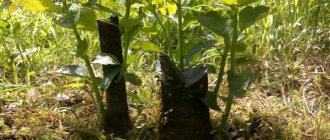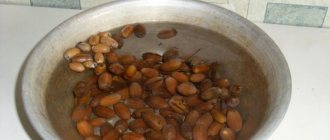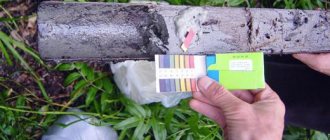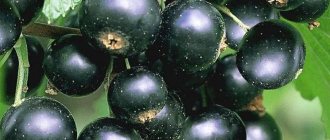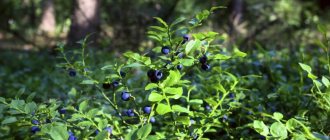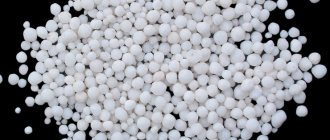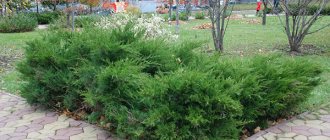Experienced gardeners know that for a beautiful and well-groomed plot, the growth of American maple becomes a real disaster. This ornamental tree is cultivated for the quick landscaping of parks and the construction of a natural barrier from industrial enterprises, railways and highways. At the same time, the appearance of a maple on a summer cottage will be an unpleasant surprise, because getting rid of it is not so easy. Features and proven methods for eliminating maple growth on your own are discussed in the information in our article.
Removing root growth
How to get rid of maple trees in your garden?
The fight against maple root shoots must be carried out in several directions. It is a good idea to destroy a tree from whose roots shoots are moving into the area. True, this is not always possible. Sometimes such a tree grows on a neighbor’s property, but for some reason it doesn’t bother him. In this case, you have to fight the growth. Removing a tree does not always lead to a quick solution to the problem. After all, they usually cut off the trunk, but the root remains. Feeling the approach of death, he begins to actively send out root shoots, hoping to leave offspring. The same reaction is observed in old, dying trees living out their last years.
If a tree, thick or thin, is cut to ground level without leaving a stump, the likelihood of growth of growth is significantly reduced. Sometimes it is difficult to cut a thick tree this way. Especially if you do this with a hand saw, popularly called “Friendship-2”. Experienced gardeners say that the stump will disappear faster if you cover it with soil.
You can go the other way and dig up the stump so that a hole forms around it. The roots that are exposed are chopped off. Then pour a salt solution (1 pack onto a bucket of water), pour kerosene, cover it with dry branches and set it on fire. This is also not a very environmentally friendly way.
If the young shoots continue to grow, you need to periodically cut them off. It is enough to do this once a month.
Removing annuals
If you remove small shoots in the first year of their life, you can easily get rid of them even by hand. Moreover, closer to autumn it is more difficult to do this. You have to take a shovel or other tool. It is easier to remove such sprouts on treated soil: vegetable garden, flower bed, dug up area. On virgin soil, lawn, path, you need to put in more effort.
If you miss such a tree, next year its root system will become stronger and it will resist removal more strongly. How to get rid of maple in this case? Digging it out with a shovel will not be difficult. You can use an ax to cut the stem as low in the ground as possible.
Chemical methods of eliminating trees
There are many ways to ensure that a tree on your site dries out quickly. However, the most common of them are those that involve the use of chemicals. preparations intended to destroy plants. And no matter how harmful these products can be, they nevertheless allow you to complete this work as quickly as possible.
Chemical methods of destroying trees
More specifically, the following chemical methods of destroying trees are distinguished:
- watering plant tissues with chemical compounds;
- coating leaves with special preparations;
- grafting that kills trees;
- placing the drug in the ground next to the trunk;
- complete destruction (including the stump);
- applying a chemical to the bark.
Important information! Note that most of the chemicals described below affect the root system of trees. When choosing a specific composition, be sure to take into account the composition of the soil. There are products that act on the bark or living tissues of plants.
Ideally, the tree should be cut down altogether and the remaining stump properly treated. This way you can get rid of the tree as quickly as possible. Be that as it may, first let’s get acquainted with the most effective means and features of their use.
The main methods of destroying trees with chemicals
Let’s immediately say that there are many such methods, so we will consider only the most effective of them.
Method No. 1. Application of chemicals to living tissue
The tree bark is an obstacle due to which herbicides cannot penetrate the vascular tissues of the plant. Therefore, in order for the product to reach its destination, make downward cuts on the surface of the trunk, but do not tear off the bark. Use a small ax for this. As a result, notches and cuts should be made along the entire circumference of the trunk.
Application of preparations to living wood tissue
Use the herbicide you have chosen after making the cuts - apply it to the wood tissue.
Making cuts on a small tree
Note! Do not use herbicides in the spring because the sap that oozes from the cuts will prevent the chemical from absorbing.
Method No. 2. Watering the soil with herbicides
Individual preparations can be used for uniform application to the soil surface. After rain or artificial watering, the herbicide will enter the root system. To concentrate the chemical in one place, you can resort to installing barriers in the ground (for example, concrete).
Note! This method is advisable to use in cases where it is necessary to destroy several or many trees at the same time.
The soil around the tree can be watered with herbicide
Method No. 3. "Killer" injections
They are very close in their principle of operation to method No. 1, and differ only in the fact that special devices are used to introduce chemicals into the tissue. The maximum effectiveness of the methods is achieved if a targeted effect is applied around the circumference of the trunk in increments of 5-10 cm. Injections are made at a height of approximately 1 m from the ground. The method is used for trees whose trunk diameter exceeds 5 cm.
Step 1. First, prepare a drill, as well as a drill bit for it, the diameter of which is 5-10 mm.
Step 2. Make holes 4-5 cm deep as described above. It is important that the drill is at an angle of 45-50° relative to the ground surface when working.
Holes in the barrel
Step 3. Take a simple pharmacy syringe, fill it with a product whose active ingredient is glyphosate (for example, “Ground”, “Tornado”, etc.), or, alternatively, pour the chemical directly into the holes. The concentration of glyphosate in the product must be at least 200 g/l.
Take a regular syringe
Herbicide "Ground"
For example: to dry a tree with a trunk diameter of 35 cm, you will need 35-40 ml of a product in which the concentration of glyphosate is 360 g/l.
Step 4. Seal the holes with earth to hide traces of injections, remove the shavings and see if the drug leaks out (the latter is good because it dries for a long time and is clearly visible on the bark). Soon enough the plant will begin to dry out.
There are special devices for stem injections
Note! You can use other herbicides, but it is still better to give preference to preparations with glyphosate, since they are immediately inactivated by soil microflora after the root system dies.
Heavier herbicides based on sulfometuron-methyl or imazapyr, on the contrary, after the death of trees, penetrate into the soil and often kill plants located nearby. Although you can take care of the barriers described earlier.
Method number 4. Treatment of leaves with preparations
This method is very popular when destroying shrubs whose height does not exceed 4 m. It can be used from the beginning of spring to the end of summer (the exact time depends on the specific herbicide). The effectiveness of the drugs is noticeably reduced if the weather is dry and hot, and the tree suffers from moisture deficiency.
If preparations are applied to the leaves of crops with large annual growth, this can lead to the appearance of excess growth (the only exception is certain extremely susceptible species). If you use this method, it is not necessary to impregnate the barrel with chemicals.
Overgrowth on a tree
Method No. 5. Simultaneous destruction of trunk and stump
Here, first, the tree itself is removed using an ax or chainsaw, and then a chemical is produced. stump removal (more details on this at the end of the article). If you use this method, apply the herbicide only to a fresh stump. If the diameter of the trunk is large, treat only the outer edge of the stump (no more than 5-10 cm), including the cambium - the internal tissues of such trees are mostly already dead.
Complete destruction of the tree along with the stump
If the trunk diameter is large, treat only the outer edge of the stump
If the trunk diameter is less than 10 cm, apply the chemical to the entire cut surface. Apply the drug immediately after cutting the tree - this way the effectiveness will be maximum.
If the trunk diameter is less than 10 cm, apply the chemical to the entire surface of the cut
Method number 6. Processing tree bark
Measure 30-35 cm from the ground surface, make a mark on the trunk and treat the area below this mark with a chemical. It is advisable to hold the event in spring or summer. Before applying, mix the product with oil, then treat the bark until it is completely saturated. What is typical is that this method is applicable to all trees, regardless of what type they are and what size they are.
Treatment of tree bark with herbicides
Greenhouse in autumn: cleaning, fertilizers, general care
Greenhouse cleaning work begins with clearing debris and washing the structure. And the first stages are carried out even before the onset of frost. Read more about this in this article.
Using dark packs
How to get rid of maple on a site if there are a lot of trees there?
Trees need warmth and sunlight to grow. It will not be possible to make the temperature in a separate area sub-zero. But it is possible to deprive a small piece of territory of light. If you remove access to light from the stump, it will stop sprouting.
First, trees are cut some distance above the ground. Take dark, durable bags and put them on the cut trees. They are securely fixed with tape or other available methods. This is necessary to prevent the packages from being blown away by the wind. After all, they must remain on the stumps for a long time.
The disadvantage of this method is that it can be quite difficult to process a large area. If there are a lot of stumps, the process of putting the bags on can take a lot of time and effort. If you need to get rid of several stumps, it can be used. This is an environmentally friendly way. Of course, if the bags are removed and disposed of over time.
If the tree is cut down at the root, it is more difficult to tie a bag to it.
Using the Baikal product
Reviews from gardeners indicate that treating stumps with undiluted Baikal product has a good effect. Half a liter of product is used to spill 3 dozen small stumps. If you treat them this way in the fall, then in the spring they will rot, will not sprout, and can be easily removed with a crowbar or an ax.
When deciding how to get rid of maple in your garden or garden, evaluate the affected area. They look at how quickly it needs to be done: this year, if it is growing in the garden, or over several years, if at the boundary of the plot. Assess the risk of herbicide getting into water.
Gardeners often approach the selection of seedlings extremely responsibly, trying to plan planting with maximum precision to obtain maximum benefit from the plants. They take into account not only the climatic conditions in their region, but also lighting and soil characteristics. However, sometimes owners of suburban areas are interested in what to water the tree with so that it dries out quickly. This method, of course, can hardly be considered humane, but sometimes there is simply no other way out.
For example, if there is an old tree on the site with a trunk diameter of more than 30 cm, but it cannot be cut down because there are other structures or plants nearby. The only way out in this situation is to dry the tree using special chemicals.
How to water a tree to make it dry quickly
Disadvantages of maple
The American tree has quite attractive foliage and wood that is used under certain conditions. But in our conditions, the question increasingly arises of how to destroy maple trees in the garden. First of all, its rapid spread due to natural sowing - leave the area for a couple of years, and, with a high degree of probability, this plant will appear there. Read here - Japanese cherry: planting, growing and caring for a tree at home. Characteristics, varieties, 110 photos and videos
The tree actively produces pollen, so allergy sufferers often begin to feel discomfort in the presence of maple. And given its widespread distribution, it is almost impossible to hide.
As already mentioned, maple is not whimsical, which means it will find the strength to germinate in any conditions. Regular cutting down does not always help.
Also, it is worth mentioning about the fragile structure - the presence of any buildings nearby is categorically not recommended. Finally, it is worth mentioning the crown of the tree - it grows chaotically, and frequent pruning will be required for a neat appearance.
Preventing maple growth
To correctly answer the question of how to remove maple from a site, you should start with preventing its appearance. To begin with, preventing the tree from sprouting is carried out by occupying the entire usable area in the garden, so that there are no “wastelands”.
You shouldn’t put the brakes on caring for the area - if you notice shoots from such a tree, immediately start getting rid of them.
Application of herbicides
How to get rid of a maple tree on a site if there are a lot of stumps and overgrowth, but there is no time to cover them with bags?
You need to turn to the help of herbicides - drugs that are created to destroy certain plants. Some of them have a selective effect, that is, they act only on certain types of grass. Others burn everything at the point of use.
The herbicide Arsenal VK, produced by BASF, is used by railway workers to remove all vegetation within a certain distance from the tracks. The herbicide “Grader VGR” is similar in action. Sold in 20 liter cans. Usually no one has such a number of stumps in their garden plot. Therefore, most often, owners of plots where maples grow try to find people related to the railroad.
How to get rid of a maple tree without damaging surrounding trees? When using such a product, the proportions must be strictly observed. If the concentration is made too strong, not only unnecessary maples can disappear, but also all vegetation at a distance of several meters from the place of application.
The herbicides Tornado 500BP and Roundup VP are available for sale in small packages. Experts recommend removing root growth using Hurricane Forte VR preparations. It is sold packaged in 350 ml. User reviews indicate that Roundup does not help cope with the problem well. Therefore, they use it in combination with other operations: cutting off the bark on the trunk, cutting off accessible roots, uprooting stumps.
If you need to remove an unnecessary tree and growth from it, cut down the trunk, and use a drill to make deep holes closer to the edge of the stump (in the cambium layer). Periodically pour Roundup diluted with three parts water into the holes. After the procedure, cover the stump with a black bag. Next year the stump will disappear and shoots will stop appearing.
Using herbicides
Although this is the most expensive, it is a convenient and effective method. To be honest, I thought that this infection did not take anything at all. I tried some kind of herbicide for grass, it’s like grain to an American. That's why I despaired. I once talked to a friend about my problem. An acquaintance, by the way, is engaged in the wholesale sale of various chemicals for the destruction of all life on earth, and advised me to use the Arsenal product produced by BASF. One problem, this liquid is sold in 20 liter canisters and you can’t find a smaller volume at retail. And one canister costs as much as a new snow blower. In general, I begged myself for half a liter of this stuff.
I decided to conduct tests in the fall. The herbicide can be used in several ways: by injection under the bark of a tree, with a brush on the cut, and with a brush on a trunk cleared of bark.
I did not give injections, the expense is too high for my plantation. I simply cut down trees and bushes and smeared the maple cuts with herbicide. In the spring I couldn’t believe my eyes, I won’t say that everything was perfect, but new shoots came out in a couple of places, apparently I didn’t anoint it at all or didn’t anoint it well. The volume is a drop in the bucket compared to what it was without poison.
Just for fun, I removed the bark from one American maple tree and applied a little herbicide.
In the spring, the half of the tree on the side of which it was anointed dried up.
In general, it is possible and necessary to fight the American maple. It's a pity the fight isn't cheap. You can ask about this herbicide from familiar railway workers and from people who deal with thickets of trees for a long time.
How can you get rid of maple trees on your property?
The vitality of maple sometimes surprises even the most experienced owners of the areas where this tree grows. Maple is often compared to a weed that is not so easy to remove. For some it is an ornamental tree, but for others it is like a weed in the garden.
The first and easiest option for dealing with maple is salt. This method of destroying maple is inexpensive, simple and quite effective. The probability that the tree will disappear is fifty percent. It all depends on the age of the maple, the soil and your efforts.
In order to get rid of a maple tree using salt, after cutting down the tree trunk on the stump, you need to make a deep cross-shaped cut and pour it with salt in a 1:1 ratio. It is also recommended to water some of the root trees with diesel fuel in the same ratio. But the procedure must be repeated several times for a good result.
Another inexpensive way to control green plants is with a black bag. This option is more labor-intensive, but gives a greater percentage of effectiveness after application. The tree also needs to be cut down first. Then you need to put a black bag on the stump and secure it firmly. The main thing is that the bag is dense enough, does not allow light to pass through, and does not tear. This technique is best suited to a tree with one stump and no shoots.
Herbicides to the rescue. Strong chemicals have always remained one of the best options for destroying maples on the site. Yes, this option for pest control is quite expensive, but it is very effective and fast-acting. You need to choose a proven, potent type. Herbicides are most often diluted with water and watered on the roots, treated with tree bark and lubricated with cut hemp. The main thing is to carefully read the instructions and follow their points.
You can also often hear that you can get rid of a maple tree on your property by simply uprooting it. But we do not recommend starting with such radical actions, because the result may be the opposite. It is best to first prepare and “bark” (clean the tree of bark) along the entire trunk and large shoots. It is best to do this in the spring so that the plant dries out over the summer. Afterwards you can start cutting down and uprooting the stumps. This option of disposal takes longer, but is also reliable.
You can also get rid of maple trees on your property using an alternative method by blocking the air. A tree grows when it breathes. To do this, you need to pave the roots of the tree, blocking their access to air and water. The area near the trunk and roots can be filled with concrete. This method will take effect within a few weeks. This option can be used if in the future there will be a path or asphalt in place of the maple tree, because the place is concreted.
The access of air and moisture can also be limited using mulch. This option is considered the most environmentally friendly and affordable. The maple trunk and the area near the roots are covered with mulch. Its functions can be performed by gravel, pebbles, sawdust, branches, pine needles or hay. The mulch layer should be more than fifteen centimeters and fit tightly to the tree and trunk. This method of destroying a maple, of course, will not completely block the entry of moisture and air into the roots, but it will have enough strength to destroy the life of the maple in some time. At this point, you can gradually cut out the sprouts, remove branches and parts of the trunk, and dead roots.
It is worth noting that you can get rid of maple trees on your property by contacting experts who specialize in removing unwanted trees. This method is used when it is impossible to cope with the problem on your own. Special companies always have equipment for working with trees, special means for their destruction, as well as experience in combating unwanted plants on the site.
How to destroy and get rid of maple thickets - methods of control and folk remedies
There are many methods of varying degrees of effectiveness for eradicating maple shoots from an area. Some of them give excellent results, but are expensive, and other conditions require a lot of effort and time to fulfill. The most popular methods are given below.
Methods of dealing with maple on the site:
- Use of salt . The method is inexpensive, but not always effective. The point is to pour a lot of salt onto the top cut, ensuring it is sealed from rain and moisture. This component negatively affects the root system, slows down growth and, if used regularly, can destroy the plant. In terms of efficiency, it is not the most reliable, but it is practically harmless to other plantings and is environmentally friendly. You may also be interested in information on how to water onions with salt to prevent pests.
- Black film. You can tape a light-proof material to the cut of the tree to prevent the ingress of moisture and nutrients. For greater effectiveness, you can combine it with salt, then the plant is guaranteed to die. The method works well for single plantings, because it is simply impossible to cultivate a large field in this way. It’s worth learning more about how to choose weed control film for your garden.
- Mechanical destruction . The most labor-intensive, but extremely effective way to get rid of weeds. It consists of regularly plowing and removing all rhizomes and aerial parts. For maximum effect, you can use agricultural machinery, and also combine it with other methods. This way you can remove tree roots.
- Unfavourable conditions . It has been noticed that even blocking the access of air and moisture helps to destroy the growth, so you can simply dig down the stumps with a large amount of earth or crushed stone. Some gardeners use concreting the surface, but this is only suitable for future paths or buildings, and not for a vegetable garden.
- Broad-spectrum herbicides . This is a “professional” method of getting rid of vegetation, used to clear large areas. Quite expensive and has a harmful effect on the soil. The herbicides used should have a strong effect, and the treatment should be repeated if necessary. For individual plots it is suitable only in especially hopeless cases when the maple has taken over most of the land. It will also be useful to know how you can use a chemical to defeat wheatgrass.
- Burning out with fire . Some gardeners also practice this method. To do this, you need to make a deep cut on the cut tree, pour diesel fuel or any flammable substance into it and set it on fire. After several such procedures, the tree will die along with the roots, but this may not help with young shoots. There are also ways to use other aggressive substances, but in this case there is contamination of the soil and groundwater, which is unacceptable for other plantings. By clicking on the link you can learn more about how to remove weeds using folk remedies.
The American maple is confidently conquering ever larger territories and is rightfully classified as a weed. Thanks to its amazing vitality, it survives well in the most unsuitable conditions, quickly multiplies and grows. During the summer season it gives up to half a meter of growth, and there can be more than thirty root shoots from one tree. You may also find it useful to learn how to destroy horsetail.
All this, and also the large amount of pollen produced - an allergen, makes its planting a serious threat. If young shoots of this plant appear on your site, get ready to eradicate them immediately, otherwise the crops will not have enough moisture and nutrients, which the invader will take from them. The main characteristics of this plant, as well as proven methods of combating it, are discussed in the information in our article. Read how to get rid of field bindweed here.
Prevention - how to remove maple roots and shoots from the garden forever
It is extremely difficult to prevent the appearance of a thicket, because already in the sixth year of growth, winged seeds ripen on a young tree. It is impossible to predict when the wind will bring them to your site, so it is better to regularly inspect its perimeter for an uninvited guest.
Maple loves well-moistened soil in lowlands, so the best way to protect itself from its growth is to use the entire usable area of the site, avoiding empty spaces. In addition, you should not wait for the young shoot to fill the entire territory, but immediately begin to eradicate it.
Another problem can be whining, but how to get rid of whining in a short time is described in great detail at this link.
Maple likes to settle in abandoned areas and fields, where it will be even more difficult to fight it. If it has appeared on your site, do not lose heart; you need to know exactly what to do, otherwise the weed will quickly spread and drown out cultural plantings.
Mulching method
How to deal with Khrushchev
To destroy maple shoots, the mulching method is well suited, when the dug-up area with beveled or cut down shoots is covered with a thick cloth on top for the whole summer and autumn.
You can use dark film as a canvas. Every 2 weeks it must be lifted, checking for the presence of new shoots. Fresh growth must be systematically destroyed.
Why does the American maple need to be destroyed?
Wood is a strong allergen with a wide distribution area. In addition to rapid spread, it has a number of disadvantages:
- It grows quickly and crowds out other plantings. At the same time, it is not the best neighbor for residential buildings - the branches and trunk are quite fragile and can fall on the roof in a strong wind. Fragile branches and trunks can fall on your home or other plantings at any time.
- During flowering, it releases a large amount of pollen, which can cause allergies in people.
- The crown grows very widely and is difficult to correct. The plant is not suitable for landscape design. The wide crown also shades other plantings.
- The root system and shoots spread quickly and widely, breaking the asphalt and preventing other plants from growing.
- Roots and decaying leaves release toxins that inhibit the growth of other plants.
- The wood is brittle and therefore not suitable for construction. Only wooden boxes or household items are made from American maple wood: vases, sculptures, knife handles.
The tree has its positive aspects, but they are more suitable for its growth in the wild. Spreading crowns often attract residents. Birds build nests on the branches and eat the fruits of the tree. Lionfish and squirrels love to eat. Scientists use maple to breed new varieties of wood. For example, as a result of selection, the decorative maple Flamingo appeared.
If you do not want to destroy the tree and still decide to leave the maple on the site, it will not require special care. In the spring it can be fed with potassium and sodium fertilizers and watered periodically. The watering rate is 15 liters for old trees and twice as much for young trees. In summer, it is advisable to weed and loosen the soil around the tree and remove side branches.
We still recommend destroying the surrounding shoots like weeds, if you do not plan to propagate maples over the entire area of the site.
Maple seeds take root well in the soil, many of them germinate
Plant characteristics
The light-loving maple originated from North America. There it is widespread, grows up to 20 meters or more in height and can live up to a hundred years. In street plantings, trees live shorter lives, up to 30 years. The tree has a short trunk, branched at the base, with dark bark and cracks, which turn into deep grooves as the tree ages.
The crown of the tree is spreading, the leaves have jagged edges and a dark upper surface. In autumn the leaves turn yellow and reddish foliage may appear. Because of the leaves similar to those of an ash tree, this type of maple is also called Ash-like. The winged fruits ripen at the end of summer and remain on the branches until spring. The tree tolerates frosts of 35 and 40 degrees well, so it feels good even in the Urals and Siberia.
Source: Depositphotos
The characteristically shaped leaves and winged maple fruits are recognizable
How to get rid of American maple
One of the methods of dealing with maple is prevention. The plant easily takes root in empty areas where the wind can blow lionfish, so plant the entire area with useful plants. If you have desert areas, check them regularly and eliminate any strange weeds or growths.
Dealing with weeds and small trees is, of course, easier than with plantings that take up half the garden. So if the trees are small, you can try simple gentle methods first:
- Apply salt to the cut piece of wood. The layer must be thick - salt inhibits the growth of the tree and inhibits the root system. Cover the cut with plastic to ensure a seal. You can cover the cut with light-proof material. The method does not harm other trees or soil.
- Bury the tree stump with plenty of crushed stone or soil. If possible, concrete the area.
- Remove the rhizome and above-ground parts of the tree from the ground. If the root is deep, it may be worth using agricultural machinery.
Maples have a large crown that can shade most of the area
How to defeat young shoots
If young growth of American maple has appeared on the territory, and you are not a supporter of the use of chemicals, you can use mulching. Soft types of mulch will not help in this case - you must use bark or sawdust, and the mulch must be at least 5 cm thick.
A good result can be obtained by covering the ground with a covering material - spunbond, lutrasil or any dark-colored geotextile will do. Ordinary cardboard will do the job well. Cover the ground and reinforce the covering around the perimeter, as well as in several places in the center, and leave for at least a month. This method is best used after harvest or in the fall. But here it is necessary to take into account that in addition to the maple, other plants will also die, so if it is, for example, a lawn, then it will have to be re-sowed.
Good results can be obtained by using EM drugs, for example, “Shine-3”. Sprinkle the area with overgrown growth with the preparation, carefully reading the instructions. Cover this area with covering material. Be careful with nearby plantings; if they come into contact with them or the soil next to them, the plants may die. The drug is harmless to the environment; moreover, after the period of its influence ends, you will receive a wonderful area ready for planting any plants.
Maples have a large crown that can shade most of the area
Mechanical methods for removing maple from a site
Ash-leaf maple wood is loose and contains up to 78% water. This type is not suitable for construction or furniture making. Even as firewood, its use is not justified; high moisture content reduces the lower calorific value.
Fragile branches break easily with little force. It is easily chopped with an ax (you need to strike at an angle of 30...45 ⁰ to the axis of the trunk). It is convenient to use circular and chain saws for cutting.
The wide crown creates certain inconveniences for clearing the area. The branches have to be cut down to make it easier to carry the tree to the burning site. The wood itself can be used to shred and turn into mulch. Upon contact with soil, such mulch rots within two years and forms humus.
The roots are located quite deep, two to three year old trees penetrate to a depth of 1.5...2.0 m. In older trees, the roots penetrate up to 3.5...4.0 m. The root itself branches quite widely. Occupies an area 3...4 times wider than the crown of the tree covers.
Research has been conducted to determine the labor intensity of uprooting roots. It turned out that if you have the necessary tools, you will have to spend at least 3.0...4.0 hours.
The use of mechanization means reduces labor costs by approximately half. The force on the crane boom for uprooting a tree aged 3...5 years is more than 50 kN (5000 kg).
It is advisable to remove annual plants before the formation of a strong root. Already in the first year of life, it penetrates to a depth of 30 cm and forms side shoots. They try to gain a foothold in the soil.
When mowing with a regular or disc scythe, root suckers may emerge from the remaining root. They will form next spring. Therefore, when clearing an area of annual seedlings, it is advisable to dig out the roots.
Attention! Branches left behind can form a new root under suitable conditions. A new plant will appear that you will have to fight.
Stopping light from reaching the stump
Among the mechanical methods of fighting there is a rather original one. It was described in an 18th-century French pamphlet. After cutting down the trunk, it was recommended to completely cover the remainder with straw.
Tie tightly with straw strands to hold the shelter over the stump. Sprinkle soil on top to prevent sunlight from penetrating the plant.
According to the author, after a year the stump loses its ability to form new growth. Putrefactive processes begin in it. To enhance effectiveness, it was additionally advised to water the stump with sea water or wine vinegar.
Advice given more than two hundred years ago can still be used today. Use black plastic garbage bags to cover the stump. You will need to secure the bag firmly so that the wind does not blow it away. In a year, each site owner will be able to see how effective this method of combating weeds is.
Physical method of maple removal
The mechanical, or physical, method involves the use of such tools:
The mechanical method is considered the most economical (if you get rid of trees yourself), but a labor-intensive process. For these reasons, this method is well suited for areas with a small number of trees.
In order to get rid of unwanted vegetation on the site as quickly as possible and with minimal physical effort, you should adhere to the following course of work:
- Cut down most of the tree, but leave about 2 m of trunk. The latter will serve as a lever.
- Dig up the root zone. If the tree is large, then the radius of excavation is about 2 m.
- Horizontal roots that come from the central trunk must be removed. At this stage of the work, an ax is used.
- The central trunk is cut from all sides. Notches should be made as close to the ground as possible. In order to remove the taproot as deeply as possible (break off), they begin to swing and rotate the stumped trunk around its axis.
If the site is dominated by sandy or clay soil, in order to get to the root as best as possible, you should partially excavate the soil around the trunk, and then wash part of it with a stream of water (strong pressure).
After mechanical removal of the tree, it is necessary to monitor the area where the maple was located for 2 years, since in most cases shoots appear. To prevent the tree from re-growing in the area from those roots that remain in the ground, all emerging shoots should be destroyed.
Characteristics and description, is it possible to plant an American maple tree on a summer cottage?
American garden maple is distributed in almost all countries and continents. It belongs to the maple tree family, has several varieties, and is distributed almost everywhere in our country. This article will tell you how to get rid of burdock on your property.
Among the advantages of maple are uneven yellowing of the crown, rapid growth, and unpretentiousness to growing conditions.
It is distinguished by a wide and spreading crown, numerous root shoots and beautiful decorative leaves. The trees tolerate cold temperatures down to 40 degrees below zero and grow on soils of any composition and even in wetlands where such plants usually die. The annual growth is about half a meter, which is a very significant figure. At the same time, this crop has not gained much popularity when grown, and this is due, first of all, to the harmful “properties” of the American maple. You may also find it useful to learn about how to remove reeds from your garden and what chemicals should be used.
The rapid growth of shoots is of certain interest, but it also serves as a disadvantage, because it will be very difficult to get rid of young shoots.
In addition, such rates make the tree very unstable, and in order to form a beautiful and neat crown it is necessary to perform pruning much more often than usual. This creates difficulties in care, and the tree is unstable and can break off at any moment. That is why the use of maple as a decoration is associated with great difficulties and unjustified risk. Find out how to get rid of nettles in your garden here.
Video shows how to get rid of maple trees on your property:
Maple can self-sow over long distances, making it difficult to destroy. Abandoned areas and fields are filled with young growth for literally three to four years, and it is almost impossible to get rid of it.
Harm to plants for garden crops in the country
Despite the decorative foliage and valuable wood for certain needs, the American maple is considered more of a weed in our country, so farmers and summer residents are not happy about its arrival. In addition to its rapid spread, the tree is also characterized by other negative qualities, which will be discussed further.
Why American maple is harmful:
- Strong allergen . Large pollen production becomes a real disaster for people with allergies. In addition, the distribution area of this plant is quite large, so it is almost impossible to hide or protect yourself from its influence.
- Rapid development of the territory . Young shoots quickly gain strength even under unfavorable growing conditions and regular cutting down. If there is a maple tree on your property, get ready for active and prolonged “military” actions. When developing a site, you should pay attention to moles, but this material will help you understand how to remove moles from a site.
- Fragile trunk and branches. A large tree on the site poses a potential danger, because it or part of it can collapse at the most inopportune moment. This is why maple is not suitable for growing near a house or other buildings, and in some cases it can block a road or damage communications.
- Spreading crown. Despite the decorative leaves, such a tree will not be suitable for growing in landscape design. Rapid and chaotic growth of branches makes the crown untidy and too large. Regular pruning helps for a while, but there is always a risk that these measures will not be enough.
- Short period of life . Under natural conditions, maple trees live up to a maximum of 100 years, which is not a record figure for such a crop. In urban areas this figure is even lower. Maple can live up to 30 - 35 years, after which the tree must be removed. This increases costs and is not always acceptable, besides, the wood does not have any value or universal purpose. You may also find it useful to learn how to destroy hops.
All these inconveniences make the tree unsuitable for growing in landscape design, and in the city there are more worthy analogues - landscapers. On your own property, the appearance of a maple will be a real disaster, because it is very difficult to get rid of it.
How to destroy maple trees in a garden plot?
Maples don't just produce shoots, they produce impenetrable thickets. And the root system is just as impenetrable. We'll have to spray defoliants like the Americans did over Vietnam. Our cherries were the same. An old neglected garden that grew on its own. We hired a small tractor with a small bucket. Although the bucket is small, the tractor itself is strong. The trees weren't even cut down. With this bucket the tractor pulled them out together with the roots. Then we waited about a month for everything to dry. Otherwise, there would not be enough strength to remove it all. There are also large tractors that have a linkage called a fang. This fang is a special device for uprooting. Of course, the tractor is huge, but we’re already tired of the maples. If everything is so boring and beyond the control of your arms and back, then it makes sense to turn around the entire garden once, but remove everything unnecessary. However, the shoots will appear for another season, but so little that even spraying will not be necessary. We simply plowed this area twice, in spring and autumn. And they got rid of the cherries. I found photos online of approximately the equipment that helped us.
This tractor is for very heavy work.
Discussion in our VKontakte group:
Larisa Garina:
I planted maples on purpose, because everyone has their own problems
Anastasia Plakhova:
why destroy them? This is great compost!
Lyudmila Shakurova:
And we planted them specifically for beauty.
Lyudmila Gracheva:
How to destroy cherry shoots?
Natalya Ivanova:
They cut down the overgrown growth using Roundup
Galya Tikhonova:
Lyudmila, we are talking about another maple, the Irish maple (I think that’s its real name), also called the American maple, it grows so much that “dear mother.” First of all, you need to get rid of the female trees so that propagation by seeds stops, and the male ones can be left for shade. After cutting, all that remains is to destroy the stumps, there are many different ways: drill a hole, put something in there (I don’t remember what), cover it with a bag for a year, and after a year set it on fire, the stump burns out along with the roots, you can also uproot it, but this problematic, but you can also try herbicides, but you need to spray them on the green leaves.
Natalya Kurakina:
Galya, saltpeter.
Svetlana Heino:
Galya, it’s amazing - seedlings are sold in stores. I didn’t know about such a danger and bought one - it grows in the garden. It’s still small, something hasn’t grown for about 4 years, but it’s not big at all. The tag said Japanese maple, and the second one was planted near the house a couple of years ago - it also hadn’t grown yet, so it was called American maple. Dig something up before you kill everything you can.
Natalia Stankevich:
Galya, sprinkle table salt.
Vika Egorova:
Can salt kill spruce?
Galya Tikhonova:
Svetlana, if it’s an American man, then it’s not scary, but if helicopter seeds grow on him, then every seed will have to be removed. You can go crazy! I have a sea of these maples, we’ve been fighting for three years now (since we moved), but they are sprouting new growth, I’m still cutting out young shoots on old stumps, but I still can’t get my husband to uproot them.
Galya Tikhonova:
Natalya, exactly! Saltpeter! Now I’ll go and write it down, it’s time to get down to business myself, my husband doesn’t have time.
Svetlana Heino:
Galya, I rushed to read about Japanese - it doesn’t seem to be a big deal, they even promise to keep the little ones in our area. And the one that was purchased as an American one has not yet shown its “horns”. I think I’ll cut it for now, so that if anything happens, it will be easier to get the seeds. But it’s only about a meter so far. Oh, I'm excited. Just a couple of years ago, for example, I learned that buckwheat grass is a beast and an enemy. And so I loved her. In my case, however, it does not multiply much; even the bush has not grown at all for many years.
Galya Tikhonova:
Svetlana, we have a lot of such parasites, here is another one that has begun to grow in the field - rose hips, this is some kind of nightmare, it’s not so easy to remove it, there are only thorns! I tried to get close to him, but only skinned my arms up to my shoulders.
Svetlana Heino:
Galya, rosehip - yes, prickly. He has one plus - he is not a terrorist brought in from outside, he is almost his own
